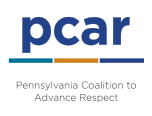What is human trafficking?
Human trafficking is a crime where people profit from the exploitation of children, adolescents, and adults.
Sex trafficking occurs when one person manipulates another person into sex acts in exchange for something of value, such as money, food, shelter, or drugs.
In cases of sex trafficking involving adults aged 18 and older, the law requires evidence that the victim was forced, coerced, or defrauded. However, in cases involving people under the age of 18, sexual exploitation is always illegal, regardless of whether or not there is evidence of force, fraud, or coercion (PCAR, 2018; The Institute to Address Commercial Sexual Exploitation [CSE Institute], 2016).
Who are the victims?
Victims of trafficking come from all walks of life, and may be foreign nationals or U.S. citizens. Women and girls make up the majority of reported victims (Polaris, 2019), and people who identify with under-represented or underserved communities or who are perceived as vulnerable may be at greater risk of exploitation.
This includes:
- Children, youth, and adults who are homeless
- Children and youth living in foster care
- LGBTQ people
- People of color
- People who have experienced physical or sexual abuse in the past
- People struggling with self-esteem
- People who live in poverty
- Refugees
- Undocumented immigrants
- Migrant workers
- People living with addiction
- Children, youth, and adults living with intellectual disabilities or mental illness
Human trafficking vs. Human smuggling
While human trafficking may involve transporting victims across national or state borders, trafficking often occurs in the community where the victim lives, without any travel at all. By contrast, human smuggling is the illegal transportation of a person or people across an international border. Although illegal, smuggling is often a consensual arrangement, where after the smuggling has occurred, the parties go their separate ways.
It is important to note that these two crimes often intersect. What may begin as a smuggling arrangement may become trafficking if the smuggler goes on to profit off of the person they are transporting through sexual or labor exploitation (Office to Monitor and Combat Trafficking in Persons, 2017).
Trafficking venues
Trafficking can happen anywhere.
Common venues for sex trafficking include escort services, within homes, or on the street. Reports of labor trafficking most often involve domestic work, farming/landscaping, and street begging or panhandling. Sex and labor trafficking can intersect in businesses such as massage parlors, bars, and strip clubs (Polaris, n.d.).
Traffickers’ tactics
While cases of stranger kidnapping that lead to trafficking do happen, people who sexually exploit others through trafficking are commonly known to the children they abuse, and are often family members or intimate partners (Polaris, n.d.).
Traffickers manipulate their victims to strategically build relationships of trust and dependence. These types of grooming behaviors can happen in person or online, and traffickers and their recruiters will often target young people that they perceive to be vulnerable.
There are many ways that a trafficker might manipulate a victim of trafficking. Often, the tactics may seem obvious: threatening to harm or kill the victim or their loved ones. In other cases, however, traffickers may use less overt tactics, such as extortion, debt bondage, threatening deportation, withholding legal documents or influencing legal proceedings, using drugs or addiction to control the victim, isolating a victim from family and friends, or making promises of love, fame, or fortune (CSE Institute, 2016; DHS, n.d.; PCAR, 2018). Manipulation by traffickers may be so effective that victims may not even realize that they are being exploited, or may believe that they are to blame for what is happening to them.
Signs of sexual exploitation
While each individual and situation is different, there are some potential warning signs that may indicate that a person is being harmed or trafficked.
These “red flags” can include:
- Controlling or abusive relationship(s)
- Lack of access to important documents, such as driver’s license, passport, or credit cards
- Signs of malnourishment or abuse
- Tattoos or branding
- Personal or family history of sex trafficking
- Chronic runaway
- Absences from school or work
- Changes in appearance, mood, or behavior
- Isolation from family or friends
(CSE Institute, 2016; DHS, 2017; PCAR, 2018; Polaris, 2017)
How to report
In Pennsylvania, many people who interact with children and youth are mandated reporters by law, but all people are encouraged to make reports when they suspect human trafficking of children or adults.
Reports of sex trafficking involving children should be made immediately to ChildLine, either online or by calling 1-800-932-0313.
Reports of suspected human trafficking may also be made to 911 or to the National Human Trafficking Hotline at 1-888-373-7888, or text “BeFree” (233733) to make a report.
Additional help and resources
Bucks Coalition Against Trafficking: a project of NOVA
https://novabucks.org/projects/bucks-coalition-against-trafficking/bcat-pennsylvania-coalitions/
Polaris Project
www.polarisproject.org
Pennsylvania Commission on Crime
and Delinquency
https://pcv.pccd.pa.gov/HT
Villanova School of Law Institute to Address Commercial Sexual Exploitation
www.cseinstitute.org
References:
The Institute to Address Commercial Sexual Exploitation. (2016). Sex trafficking 101. http://cseinstitute.org/wp-content/uploads/2016/12/Human-Trafficking-Res...
Office for Victims of Crime. (2013). Human trafficking. https://ovc.ojp.gov/
Office to Monitor and Combat Trafficking in Persons. (2017). Human trafficking & migrant smuggling: Understanding the difference. https://www.usaid.gov/sites/default/files/documents/1866/Human_Trafficki...
Polaris. (2019). The facts. Retrieved from https://polarisproject.org/human-trafficking/facts
Polaris (2017). 2017 statistics from the national human trafficking hotline and befree textline. https://polarisproject.org/press-releases/national-human-trafficking-hotline-cases-jump-by-13-in-2017/





